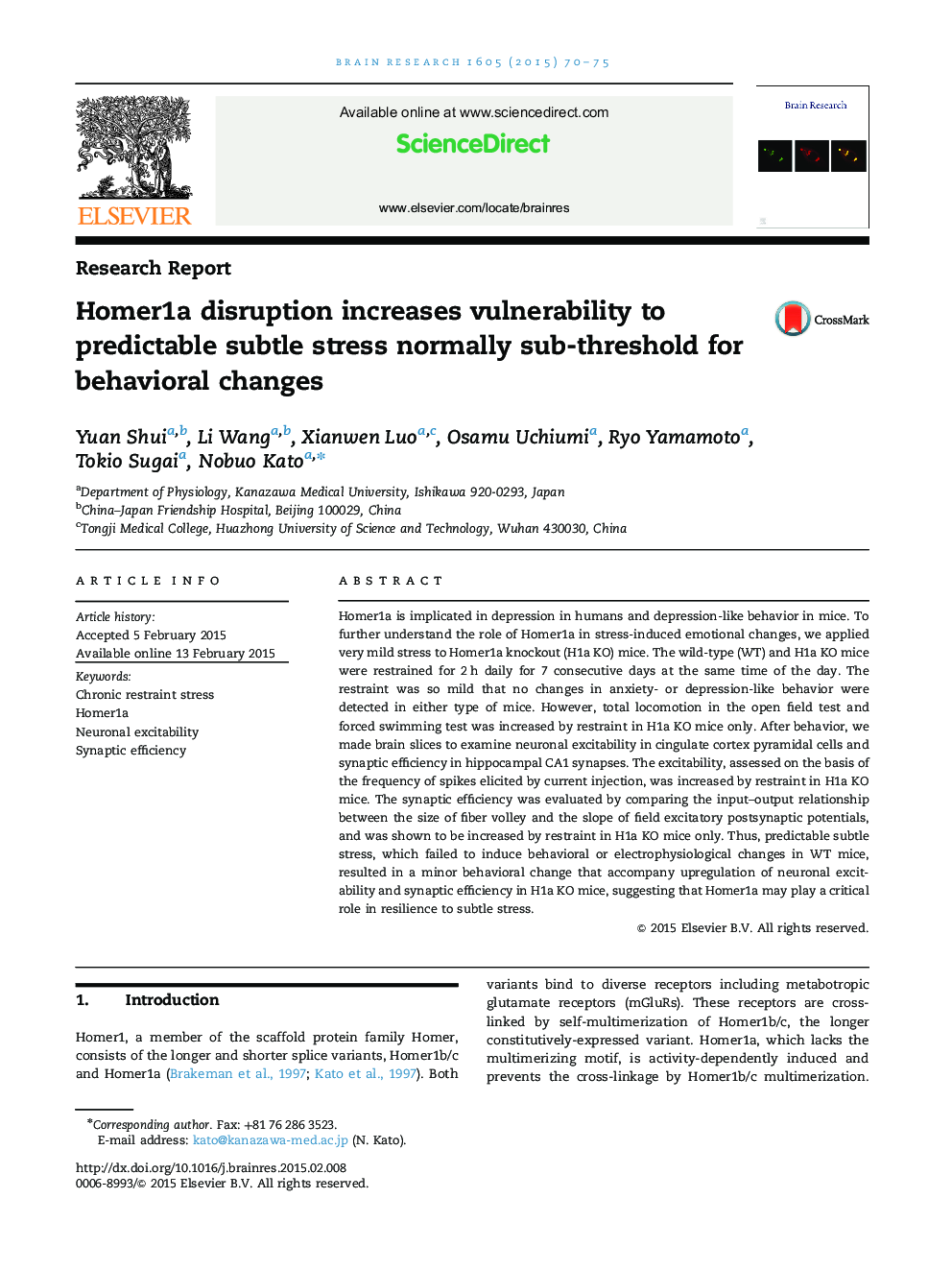| Article ID | Journal | Published Year | Pages | File Type |
|---|---|---|---|---|
| 4323866 | Brain Research | 2015 | 6 Pages |
•Chronic restraint stress was adjusted to be mild enough not to affect wild-type mice.•The same mild stress increased walking and swimming activity in Homer1a (−/−) mice.•Also, immobility during the forced swimming test was reduced in Homer1a (−/−) mice.•Neuronal excitability and synaptic efficiency were increased in Homer 1a (−/−) mice.•Homer1a may play a critical role in resilience to subtle stress.
Homer1a is implicated in depression in humans and depression-like behavior in mice. To further understand the role of Homer1a in stress-induced emotional changes, we applied very mild stress to Homer1a knockout (H1a KO) mice. The wild-type (WT) and H1a KO mice were restrained for 2 h daily for 7 consecutive days at the same time of the day. The restraint was so mild that no changes in anxiety- or depression-like behavior were detected in either type of mice. However, total locomotion in the open field test and forced swimming test was increased by restraint in H1a KO mice only. After behavior, we made brain slices to examine neuronal excitability in cingulate cortex pyramidal cells and synaptic efficiency in hippocampal CA1 synapses. The excitability, assessed on the basis of the frequency of spikes elicited by current injection, was increased by restraint in H1a KO mice. The synaptic efficiency was evaluated by comparing the input–output relationship between the size of fiber volley and the slope of field excitatory postsynaptic potentials, and was shown to be increased by restraint in H1a KO mice only. Thus, predictable subtle stress, which failed to induce behavioral or electrophysiological changes in WT mice, resulted in a minor behavioral change that accompany upregulation of neuronal excitability and synaptic efficiency in H1a KO mice, suggesting that Homer1a may play a critical role in resilience to subtle stress.
